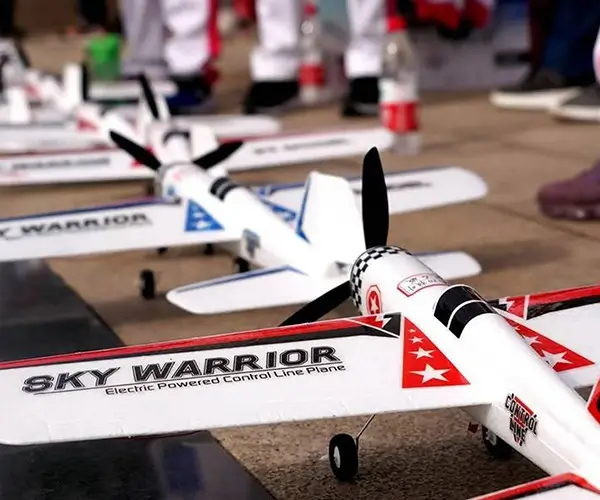In the realm of modern engineering, few advances have had as profound an impact as the evolution of motor control technology. Among these, brushless DC (BLDC) motors have emerged as a cornerstone for high-performance applications, cityscapes, and futuristic robotics. But what truly pushes these motors from good to exceptional is their control—the intelligent orchestration of rotation, torque, and speed—embodied in what's known as brushless DC motor servo control.

Imagine a symphony orchestra where each instrument plays in perfect harmony—that’s the essence of servo control for BLDC motors. This technology ensures that every twist, turn, or stop the motor makes is precise, smooth, and efficient. Whether it’s directing the arms of an advanced robotic arm, zooming through an autonomous vehicle, or fine-tuning the position of a camera lens, servo control unlocks the full potential of BLDC motors.
So, why has servo control become the gold standard? At its core, it’s because of what it enables: high accuracy, rapid responsiveness, energy efficiency, and extended lifespan—all wrapped up in a compact, reliable package. These attributes make BRLDC motors ideal for applications where precision is non-negotiable, such as aerospace, medical devices, automated manufacturing, or even consumer electronics like drones and electric bikes.
The foundation of this technological marvel lies in the unique design of brushless motors themselves. Unlike traditional brushed motors, BLDC motors eliminate brushes and commutators—common components that tend to wear out over time. Instead, they use electronic commutation, which relies on sensors and sophisticated control algorithms to manage the flow of current within the stator windings.
This shift from mechanical to electronic control opens up myriad possibilities. With the right servo control system, engineers can finely tune the motor’s operation, achieving a level of responsiveness that was previously unattainable. They can optimize torque delivery at every position, maximize efficiency during variable loads, and rapidly adapt to changing operational conditions—all in real-time.
One of the key roles of servo control in BLDC motors is position sensing. Encoders or Hall-effect sensors provide real-time data about the rotor’s position, informing the control system when to energize different stator coils. This feedback loop is essential for smooth, coordinated motion. The control algorithms then process this data, adjusting current vectors to produce the desired motion—be it a slow, precise movement or a quick burst of acceleration.
Traditional control methods relied on simple open-loop systems, which could suffice for straightforward tasks but quickly showed their limits under demanding applications. Modern servo controls utilize advanced techniques—such as Field-Oriented Control (FOC)—to manage the motor's torque and flux independently. FOC transforms the three-phase currents into a rotating reference frame, allowing for precise and efficient control of the motor’s electromagnetic fields. This not only enhances performance but also reduces energy consumption, extends motor lifespan, and improves thermal stability.
But perhaps what makes BLDC servo systems truly fascinating is their versatility. As embedded systems, they can be configured to suit a broad spectrum of requirements. High-speed operations demand fast response times and stability, while delicate tasks necessitate gentle, controlled movements. By tuning parameters like PID controllers, current limits, and feedback gains, engineers can design systems tailored to specific needs.
Moreover, the integration of sensors and control algorithms enables predictive diagnostics and adaptive control strategies. For instance, if a motor’s temperature begins to rise beyond safe limits, the control system can automatically reduce power to prevent damage, all without human intervention. This level of autonomy and safety is revolutionizing industries by reducing downtime and maintenance costs—traits highly valued in critical applications.
Now, let's explore how the software and hardware components work together within a typical BLDC servo control system. At the hardware level, precision sensors and robust power electronics—including inverters and driver circuits—form the backbone. These components supply and modulate electrical power to the motor’s stator windings based on control signals.
On the software side, real-time controllers—often based on microcontrollers or digital signal processors (DSPs)—execute algorithms designed to interpret feedback signals and send PWM (Pulse Width Modulation) signals that govern the current flow. These algorithms can incorporate advanced models for dynamic response, fault detection, and energy optimization, transforming raw data into intelligent, adaptive control actions.
The journey from a user’s command—say, moving a robotic arm to a specific position—to the motor’s smooth, accurate motion is mediated by complex interactions between sensors, controllers, and power electronics. This interplay ensures that every movement is executed with precision, reliability, and efficiency—traits that define the modern era of electromechanical systems.
As we look toward the future, the evolution of brushless DC motor servo control promises even more extraordinary capabilities. Emerging trends include the integration of AI-driven adaptive algorithms, smarter sensor fusion for noise-resistant position detection, and wireless monitoring for remote diagnostics. All these innovations build on the sturdy foundation of BLDC motors and their sophisticated control systems, propelling industries into a new age of automation and intelligence.
In the next installment, we’ll delve into specific applications, challenges faced in implementation, and exciting innovations that continue to push the boundaries of what brushless DC motor servo control can achieve. Whether you’re an engineer, a tech enthusiast, or simply curious about how modern machines move with such finesse, these insights will showcase the marvels of this technology in action.
Please confirm if you'd like me to continue with the second part, or if you'd like any adjustments to this initial half!
Established in 2005, Kpower has been dedicated to a professional compact motion unit manufacturer, headquartered in Dongguan, Guangdong Province, China.




































